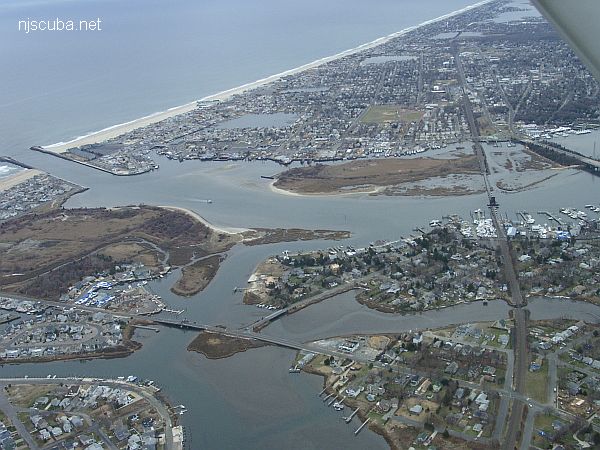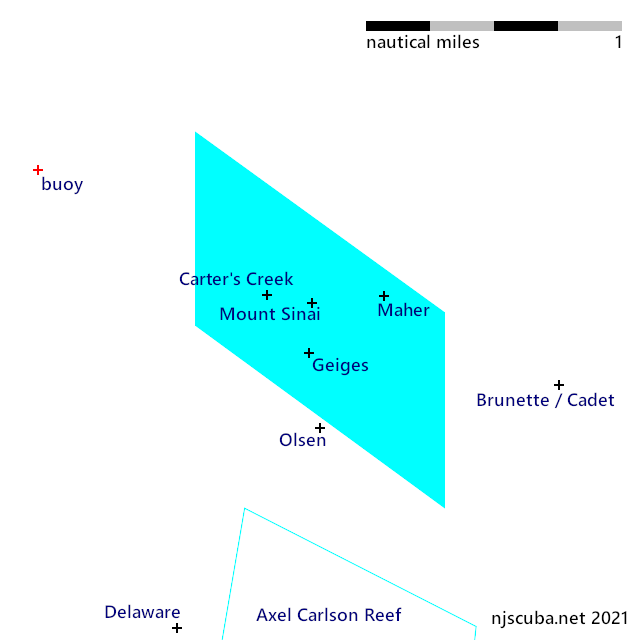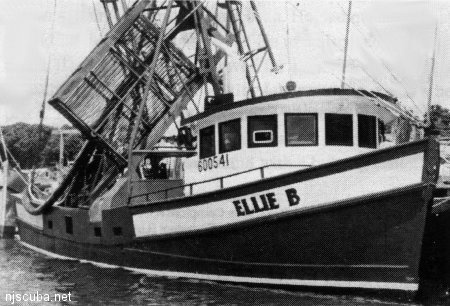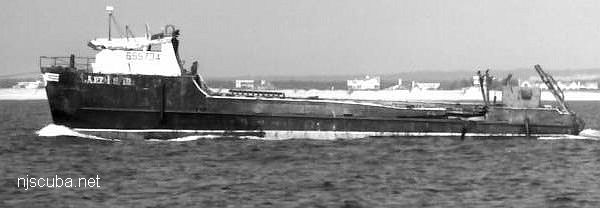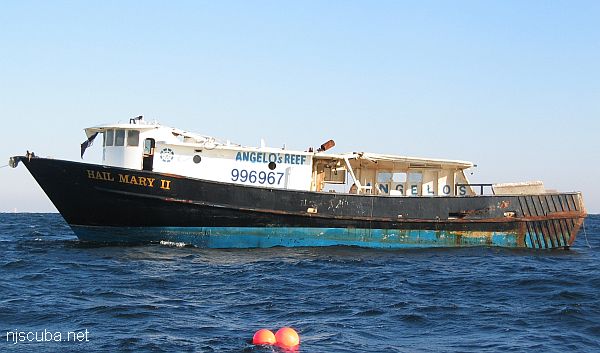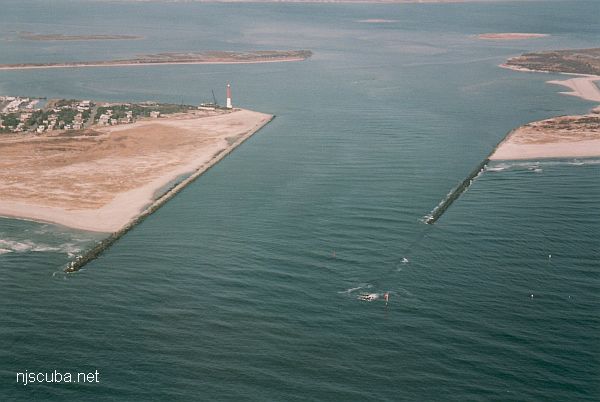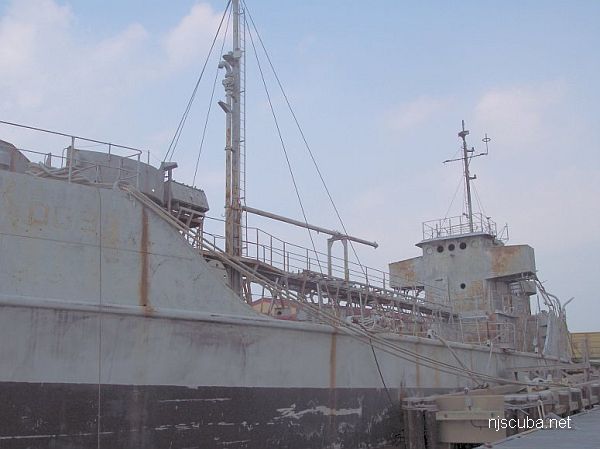November 20, 2023
Susan Rose
November 20, 2023
Fishing vessel Susan Rose was bound from her home port of Port Judith, Rhode Island to Manasquan to begin fluke fishing off New Jersey. Instead, just before 5AM * Friday November 17, 2023, she ran aground approximately 350 yards ** south of the inlet centerline. All four crew were safely gotten off. After de-fueling and de-watering, she was successfully pulled off the beach on the second attempt, at about 2AM Sunday morning, after rolling in the rough surf for almost two days. The vessel rapidly filled with water, capsized and sank, a few hundred yards ** off the beach, in approximately 50 feet of water. Again, everyone was gotten off safely.
* about 90 minutes after low tide
** news reporters said half a mile, but ... well, reporters
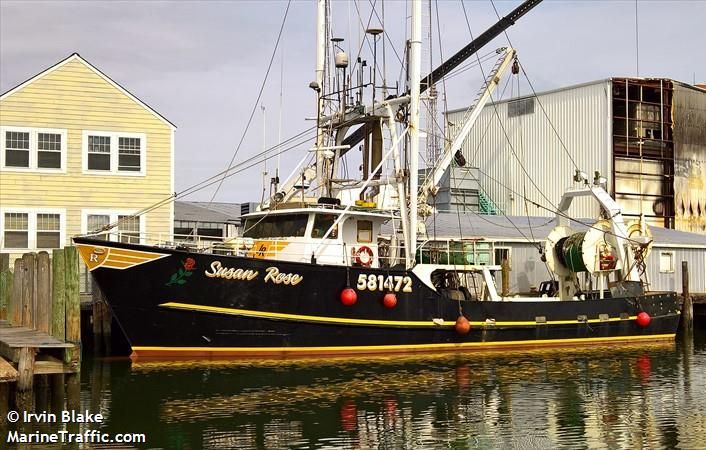
The original intent was to take the boat to Staten Island for repairs. However, that is probably no longer an option now. Susan Rose was built at Steiner Shipyard, Bayou La Batre, Alabama in 1977. Although she looks well-kept, at 45 years old, the vessel is nearing the end of her working life. After sinking, it would require complete refurbishment, which is simply not economical for a vessel of this age. At 77 feet and 142 tons, even moving her would be an expensive proposition, but it will have to be done, as the vessel probably rises to less than 30 feet from the surface, and is a hazard to navigation. To get some idea of what is involved in a salvage operation like this, see the Michelle K on the second part of the Manasquan River page, linked in the sidebar and below.
Any type of salvage operation will have to be fast, as winter is coming, and the first big storm will probably bury the Susan Rose deep in the sand, not to mention completely destroy her. One good option might be to lift her clear of the bottom (but not out of the water) and carry her a mile or so to the new Manasquan Inlet artificial reef, and drop her there. She has already been de-fueled, and the remaining engine oil, grease, hydraulic fluid, and other pollutants would be relatively minor. Not a proper cleaning, but acceptable under the circumstances, I would think. The most important thing for this would be a window of good weather. If the wreck is allowed to dig in all winter, there will probably be no choice but to chart it as a hazard and leave it there. At any rate, this will be an interesting story to follow.


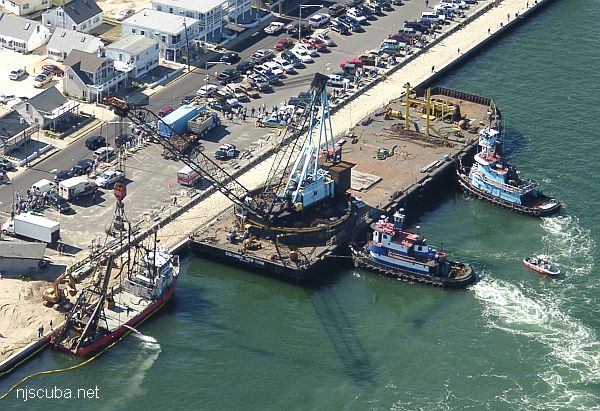
The tides:
2023-11-17 Fri 03:33 EST 0.28 feet Low Tide 2023-11-17 Fri 05:00 EST Grounding 2023-11-17 Fri 06:30 EST Crew is 'rescued' 2023-11-17 Fri 09:55 EST 4.52 feet High Tide 2023-11-17 Fri 16:29 EST 0.07 feet Low Tide 2023-11-17 Fri 22:39 EST 3.50 feet High Tide 2023-11-18 Sat 04:23 EST 0.43 feet Low Tide 2023-11-18 Sat 10:57 EST 4.39 feet High Tide 2023-11-18 Sat 17:23 EST 0.18 feet Low Tide 2023-11-18 Sat 23:43 EST 3.51 feet High Tide 2023-11-19 Sun 02:00 EST Gotten off and sunk 2023-11-19 Sun 05:24 EST 0.58 feet Low Tide
No reason has been given for the mishap, and likely none ever will be. The weather was clear. Cases like this are usually something like:
It is a long trip from Rhode Island, and the mate on watch, who should have awakened the Captain when approaching land, was asleep himself, with the autopilot driving. Fortunately, the autopilot was less-than-accurate, and drove the boat onto a nice sandy beach, rather than the rocks of the inlet, like the Ellie B. You should always set the autopilot for a point offshore, not the inlet. This way if the driver falls asleep, the boat just circles around until he wakes up. Needless to say, you don't set the autopilot for the beach either!
Or it could be something else entirely, but I'd bet money this is the story. Also, the salvage company should have checked her out better before heading off to Staten Island. She sank so fast, there wasn't even time to start the pumps. A leak that size should be findable. The strain of pulling her off the beach was probably too much for the fifty-year-old hull and sprung some seams. It was not simply a broken fitting - that would take hours to sink the boat, if not days. Just ask the Artificial Reef Program!
On the other hand, if they had found massive leaks and let her settle in shallow water, the coming weather would have pounded the Susan Rose to bits, and taking her in the inlet in sinking condition is out of the question. The Susan Rose was doomed from the moment she hit the beach. At least no one was lost or badly injured.
Update, 11/21/23
A minor oil slick was found coming from the submerged vessel, as oil and hydraulic fluid escape and rise to the surface. The slick should dissipate harmlessly. This brings the Susan Rose one step closer to reefing, which I think is her likeliest fate, much like the Cape Fear and Hail Mary II.
Update, 11/22/23

(from lavallette-seaside.shorebeat.com)
* Reporters at it again - looks like 30 feet
I was right - the wreck is quite close to shore, 800 feet, not half a mile as reported. The water is so shallow that you can see the white roof of the wheelhouse, in a stormy November. You can also a sheen of oil coming off it. There is no way the Susan Rose can be left where it is, a few hundred yards from the inlet. The question is, where will it end up? On the plus side, the life raft deployed automatically, just as it is supposed to, and is now serving as a marker buoy. The blue line in the photo is actually the tow line, in the video you can see the frayed end where they cut it. That's an expensive piece of rope, but without a diver, what else could they have done?
Kudos to Shorebeat for getting most of the facts right.
STATEMENT MADE BY NORTHSTAR MARINE
REGARDING THE F/V SUSAN ROSE SALVAGE:
"Northstar Marine, Inc. founded in 1990, has performed hundreds of salvage projects over the years. Northstar was hired to provide salvage services, pollution containment, and fuel removal for the F/V Susan Rose, which was grounded on Pt. Pleasant Beach on the morning of 11/17 at 0500 hrs. Northstar began mobilizing vacuum tanker trucks, pumps, storage tanks, salvage gear, and all manpower at 0800 on 11/17 and began fuel removal by 1400 hrs the same day. Fuel removal continued through the night. This phase was completed at 0730 on 11/18 with all fuel being removed, a total of 6500 gal.
The 2500hp tug Shannon Dann was dispatched to assist with the re-floating and arrived on 11/17 at 2300 hrs, the next morning the salvage crew utilized a line gun to shoot a messenger line to shore from a Towboat US vessel which was secured to a second, larger messenger line which was then used to bring a floating synthetic rope tow hawser to a Dyneema sling bridle with chafing gear to the bow.
By the morning of 11/18, 8 de-watering pumps were in place and hatches were secured to make the deck watertight which was extremely challenging with surf breaking across the deck and the vessel on a 28-degree list thus making it very difficult, wet and cold for the salvage team working on board.
A few hours before high tide on 11/18 around 1200hrs, the tug Shannon Dann took a steady strain on the tow hawser and over the next few hours of the tide was able to bring the boat to a point due east. However, the tide began to ebb, and re-floating efforts needed to be put on hold until the next high tide around midnight. Tides are historically stronger and higher at night, making the later tide the best time for re-floating operations.
At approximately 2200hrs, tug Shannon Dann began pulling and little progress was made until 0100 early the next morning. At this point, F/V Susan Rose began to make slight forward progress. The salvage team continued to check all internal spaces for flooding and had 8 salvage de-watering pumps manned and ready and all accessible internal spaces were dry and watertight. The Susan Rose was re-floated at approx 0130 hrs and within minutes began to list heavily to port at which time all crew were immediately evacuated to safety. Minutes before the Salvage Master called for all compartments to be checked with a report of all tanks and spaces to be dry and fit.
It appears that an unforeseen catastrophic failure occurred while the vessel was in its most vulnerable state as it started to gain buoyancy thus causing the boat to pound heavily on the bottom as it went through the large breaking waves in the surf zone. The vessel was fully floating and within 3 minutes it capsized on its side at a 45-degree angle.
The Susan Rose was then towed to a position approx. one mile offshore where it is lying in approx. 50’ of water. Plans for the next phase and final disposition of the vessel are currently being discussed."
The rescue operation was almost a disaster. See about 42 minutes into the video above. Why is anyone even in the water when the bow of the boat is almost over dry land? Two of the victims were almost crushed by the hull rolling in the rough surf. What the team on the beach was trying to do with that rope is just dumb. All they had to do was drop a line from the bow and slide down it. Then the 'salvage' ended up sinking the boat.
The whole thing reminds me of the debacle with the John DeWolfe at Barnegat a few years ago.

